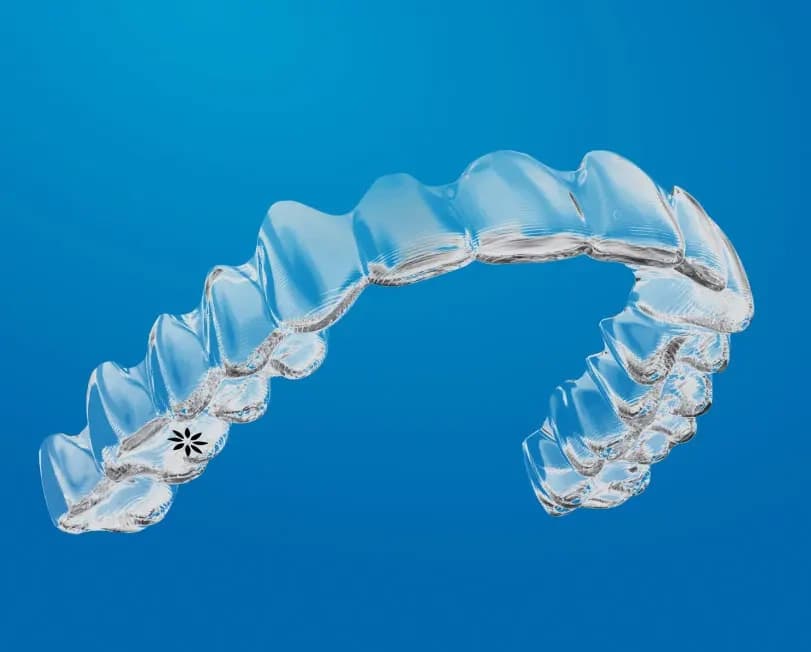Invisalign vs. Standard Braces: Which Choice Is Right for You?
When considering orthodontic treatment, the choice in between Invisalign and traditional dental braces offers several important elements that warrant careful assessment. Invisalign provides a discreet alternative with removable aligners, while traditional braces provide an extra noticeable yet reliable option for extreme misalignment.
Summary of Treatment Options

On the other hand, typical dental braces include steel brackets and cables that are adhered to the teeth. This technique uses constant pressure in time to attain alignment. While effective for intricate orthodontic issues, typical braces require normal brows through for changes and can position challenges in preserving oral health as a result of the problem of cleansing around braces and cables.
Both alternatives have their merits, and the option often depends upon certain dental conditions, lifestyle choices, and individual conformity. Inevitably, getting in touch with an orthodontic professional is important for identifying one of the most ideal therapy strategy tailored to private requirements. Recognizing the subtleties of each choice can considerably influence the general success of orthodontic therapy.
Aesthetic Factors To Consider
A significant factor influencing the option in between Invisalign and conventional braces is the aesthetic charm each treatment offers. Invisalign aligners are crafted from clear plastic, making them virtually invisible when put on. This discreet appearance is specifically appealing to grownups and young adults that may feel uncomfortable regarding their orthodontic therapy. The capacity to maintain a natural smile throughout the alignment process can substantially improve the person's self-confidence in professional and social settings.
On the other hand, traditional braces include metal brackets and cables, which can be a lot more noticeable. While advancements in orthodontic technology have actually caused the growth of smaller sized brackets and tinted elastics, conventional dental braces still preserve a more noticeable account. For some people, the presence of dental braces might hinder them from looking for required therapy.
Ultimately, the selection between Invisalign and standard dental braces may depend upon personal choices concerning looks. Patients who focus on discretion typically lean toward Invisalign, while those who are much less concerned regarding presence may choose conventional dental braces. Recognizing the aesthetic ramifications of each option is vital for making an educated decision that lines up with one's lifestyle and choices.
Convenience and Convenience

In terms of ease, Invisalign aligners are detachable, allowing individuals to enjoy their check that favorite foods without restriction and keep ideal oral health. Cleaning and flossing are simplified, as the aligners can be taken out throughout these routines, whereas conventional braces call for cautious maneuvering around brackets and cords.
In comparison, traditional braces demand regular modifications, making them much less convenient for those with active schedules. Generally, the convenience and benefit of Invisalign make it an enticing choice for lots of individuals looking for orthodontic therapy.
Treatment Period and Performance
While both Invisalign and conventional dental braces are my response reliable in dealing with dental imbalances, the period of therapy can differ substantially in between both options. Commonly, Invisalign treatment can take anywhere from 12 to 18 months, depending upon the intricacy of the instance. The clear aligners function by gradually shifting teeth into their wanted settings, and routine follow-ups with an orthodontist aid ensure development stays on course.
In comparison, conventional dental braces frequently need a longer dedication, generally ranging from 18 months to three years. This is because of their set nature and using brackets and cables, which can be extra effective for serious misalignments and complicated instances (Invisalign). The therapy performance of typical braces is well-documented, as they enable specific changes and better control over tooth motion
Eventually, the option in between Invisalign and standard braces may hinge on both the anticipated treatment duration and the specific dental issues at hand. Consulting with an orthodontist is vital, as they can provide tailored referrals based on individual demands, making certain the selected approach aligns with desired outcomes and durations.
Price Comparison and Insurance Policy Options
Cost plays a substantial duty in the decision-making process for people taking into consideration orthodontic treatment, whether opting for Invisalign or conventional braces. On visit our website standard, the cost of Invisalign arrays from $3,000 to $8,000, while standard braces typically cost in between $2,000 and $6,000. Elements affecting these expenses include the intricacy of the case, the period of therapy, and geographical place.
Insurance protection can considerably influence out-of-pocket expenses. Several dental insurance plans provide partial protection for orthodontic therapies, however the specifics can differ widely. It is critical for clients to review their insurance plan to identify the level of coverage for either choice. Generally, standard dental braces may be extra often covered by insurance policy plans contrasted to Invisalign, which some insurance companies classify as a cosmetic treatment.
Additionally, a number of orthodontic techniques provide flexible layaway plan, making both therapy options much more obtainable. Clients need to ask about potential financing options and price cuts for in advance payments. Examining the complete price, including insurance policy advantages and layaway plan, is crucial for making an informed choice that straightens with both visual choices and spending plan factors to consider.

Final Thought
In summary, the option between Invisalign and standard dental braces rests on several aspects, including aesthetic preferences, convenience, therapy duration, and cost. Invisalign provides a discreet, detachable alternative that facilitates dental hygiene and dietary flexibility, while typical dental braces might be preferable for complex oral concerns and commonly come with a lower rate factor. Ultimately, assessment with an orthodontist is important to assess specific scenarios and figure out the most suitable therapy alternative for achieving optimum oral alignment.
When considering orthodontic therapy, the choice in between Invisalign and conventional braces provides a number of crucial elements that warrant mindful evaluation.Contrasting Invisalign and typical dental braces discloses distinctive treatment alternatives for orthodontic correction.While both Invisalign and typical braces are efficient in correcting oral misalignments, the period of treatment can differ significantly in between the two choices.Cost plays a substantial function in the decision-making procedure for individuals taking into consideration orthodontic treatment, whether choosing for Invisalign or typical dental braces.In recap, the choice between Invisalign and typical braces hinges on multiple variables, including visual preferences, convenience, therapy period, and cost.